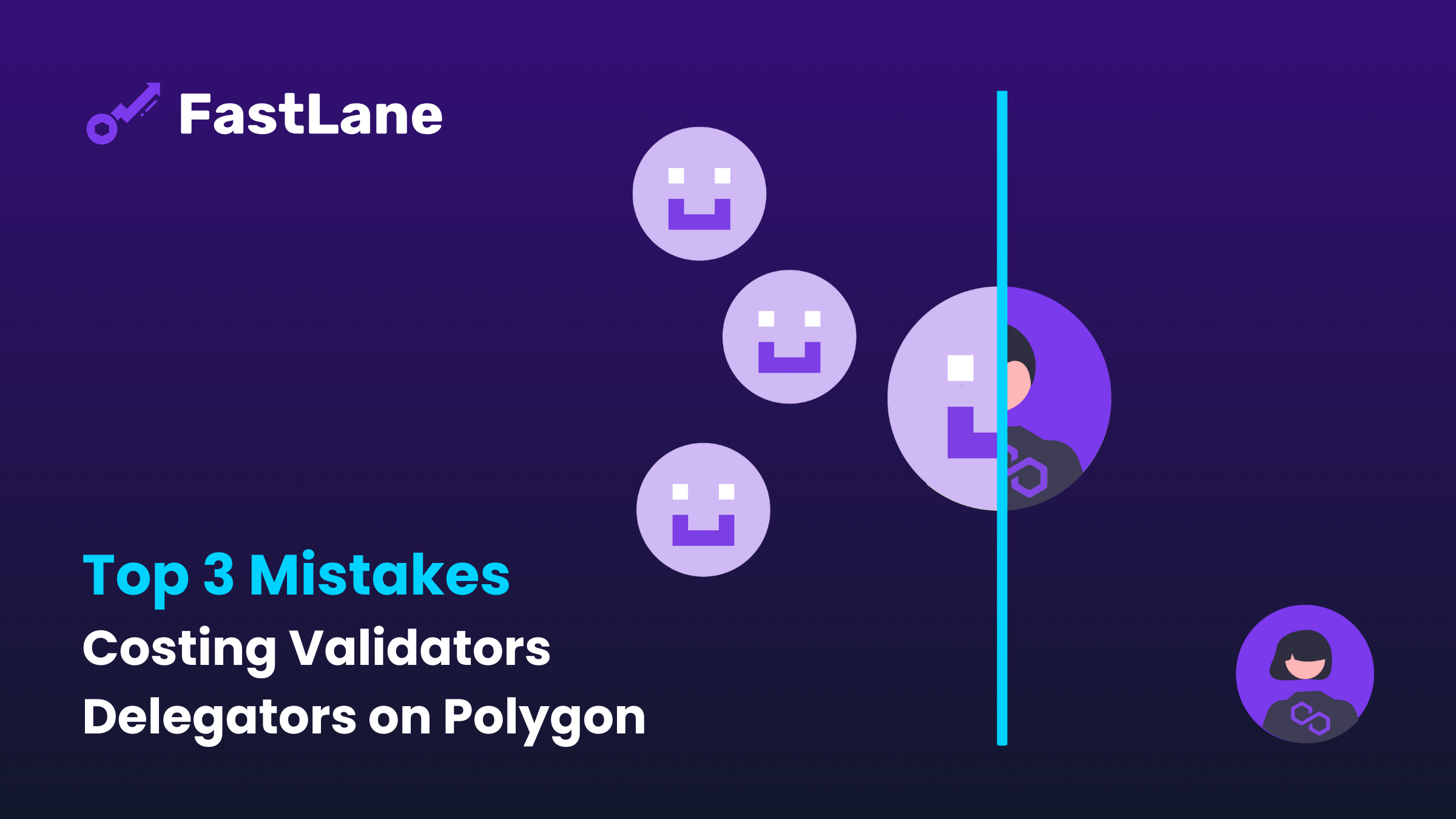The Top 3 Mistakes That Ruin Validators Chances of Attracting More Delegators on Polygon
2023-09-08

VALIDATORS
In the world of Web 3, where Polygon continues to make waves through innovation, validators are the linchpin. Their role in ensuring the security and efficiency of the ecosystem is paramount, and they also serve as magnets for stakers who delegate their MATIC tokens in anticipation of rewards. However, even the most technically proficient validators can inadvertently deter potential delegators. Here, we dissect the top three pitfalls that can hinder a validator's chances of attracting more delegators, delve into the "why", and offer solutions.
1. Inadequate Understanding of zkEVM and Polygon 2.0
Mistake: Not staying abreast with the nuances of zkEVM and Polygon 2.0, leading to operational inefficiencies.
Why It Matters: The zkEVM is a cornerstone of Polygon 2.0, enhancing transaction throughput and reducing costs. A validator's lack of understanding can result in suboptimal performance, making their node less appealing to potential stakers. This can directly impact the rewards and trust associated with the validator.
Solution: Continuous learning is key. Validators should immerse themselves in the documentation, participate in community discussions, and collaborate with peers to ensure they're leveraging the full potential of zkEVM and Polygon 2.0.
2. Overlooking Infrastructure and Security Essentials
Mistake: Failing to upgrade infrastructure or not tailoring it to the specific requirements of Polygon 2.0, leading to missed blocks or attestations.
Why It Matters: Infrastructure is the backbone of a validator's operations. Any lapse can compromise the security and efficiency of the network. Institutional investment funds, with their vast resources, are particularly discerning and will avoid validators with subpar infrastructure, leading to lost delegation opportunities.
Solution: Regular infrastructure audits and updates are crucial. Validators should ensure their setups are in line with the latest protocols and best practices. Engaging with the developer community can provide insights into optimization strategies tailored for Polygon 2.0.
3. Misalignment with Institutional Staker Expectations
Mistake: Not aligning operations with the needs and strategies of institutional stakers, leading to potential divestment.
Why It Matters: Institutional stakers bring in substantial delegations, and their trust is paramount. A misalignment can not only result in lost opportunities but can also tarnish a validator's reputation in the broader ecosystem. Building and maintaining trust with these entities is crucial for long-term success.
Solution: Direct engagement is essential. Validators should proactively reach out to institutional stakers, understand their needs, and tailor their operations accordingly. Transparency, efficiency, and clear communication channels can go a long way in building trust with these institutional entities.
Your Responsibility
Being a validator in the Polygon ecosystem is a role filled with responsibility and potential. By understanding and addressing the significance of the pitfalls outlined above, validators can position themselves as reliable nodes, attracting more delegators and solidifying their stature in the network. In the dynamic world of Web 3.0, understanding the "why" behind every action and implementing the right solutions is the key to sustained success.
Are you a Polygon Validator ready to make the most of these trends?
FastLane Labs is currently assisting 26 Polygon Validators - who produce 30.75% of all blocks - to earn more MATIC through MEV.
By simply patching your sentries (with a complimentary one-line code), you can amplify your earnings while preserving the network's integrity, shielding it from malicious activities.
Typically, the onboarding process takes less than 10 minutes, post which you can begin positively influencing the Polygon user experience and accrue MATIC that would otherwise be snapped up by Searchers.